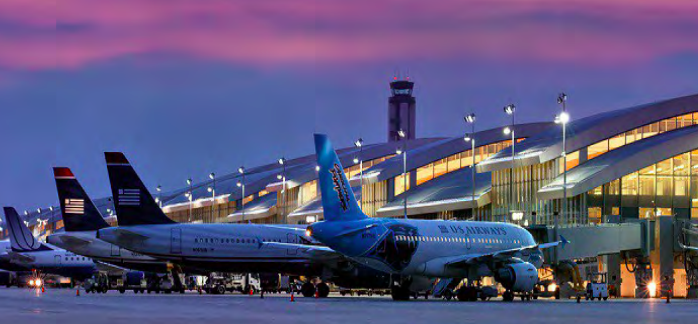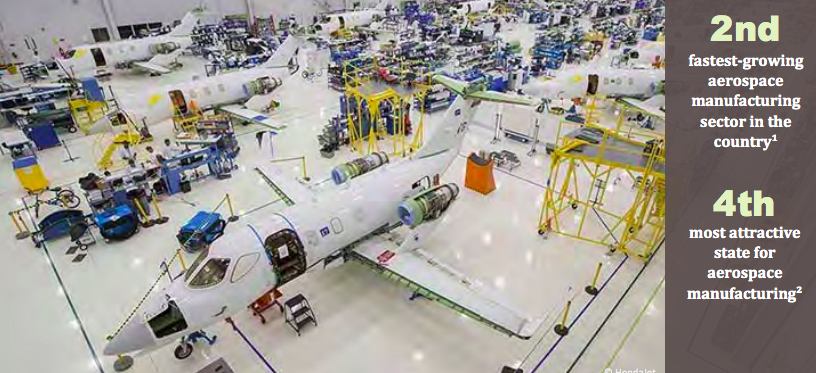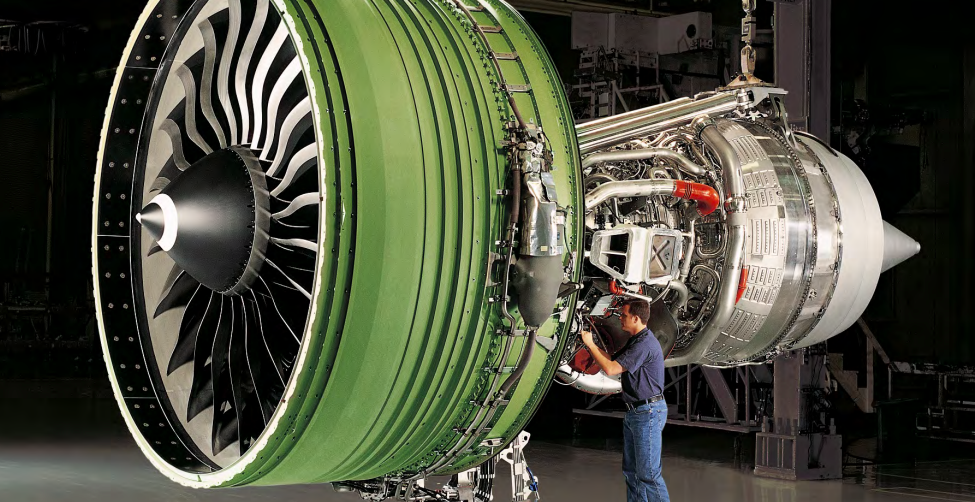NORTH CAROLINA DEPARTMENT OF TRANSPORTATION, DEPT. OF AVIATION
INSTITUTE FOR TRANSPORTATION RESEARCH AND EDUCATION
Executive Summary
North Carolina has been at the forefront of aviation technology since the Wright Brothers first flight at Kitty Hawk in 1903.
 Today, the state is home to many of the biggest names in the aerospace industry. They choose North Carolina because of its connectivity, skilled workforce and business-friendly environment.
Today, the state is home to many of the biggest names in the aerospace industry. They choose North Carolina because of its connectivity, skilled workforce and business-friendly environment.
North Carolina cities consistently rank among the top locations for entrepreneurs, families and new businesses.
The state’s large military presence, network of community colleges, leading-edge science and technology environment and world-class universities combine to both attract and produce one of the mostly highly skilled workforces in the country.
This report highlights the critical mass of assets that support a vibrant and competitive aviation and aerospace sector and make North Carolina an ideal location to start, grow or relocate an aerospace and aviation-related business. Here is a snapshot of those assets.
Aviation Infrastructure
North Carolina operates 72 publicly owned airports (10 commercial service, 62 general aviation), placing 94percent of residents within 30 minutes of an airport. The state’s airports support 11 rental car companies, 54 restaurants, cafes and bars, and 57 retail shops. The state has 18,000 licensed pilots and 15,000 aircraft mechanics.
Annual Airport Activity
N.C. airports each year count 4 million airport operations (take- offs, landings), move 56 million passengers and handle 700,000 tons of cargo. More than 8,000 private aircrafts are based at N.C. airports.
Annual Aviation Impact
The state’s 72 airports generate $31 billion in annual economic impact, create 123,400 jobs and contribute $913 million in tax revenues to state and local governments. North Carolina’s aerospace manufacturing companies post $10.5 billion in annual revenues. Airports and aerospace manufacturing account for 8.5% of the state’s Gross Domestic Product.
Aviation Sectors
North Carolina’s aviation industry includes:
- Aerospace manufacturing, the second fastest-growing in the nation with 180 companies that employ an 9,500 people and a 33.4 percent employment growth since 2012.
- Aerospace maintenance, with 76 companies and 4,500 jobs
- Military aviation, with eight bases employing 70,000.
- Commercial airlines, with 13 operators employing 13,330.
- Air freight services, with nine companies and 2,500 jobs.
- Unmanned aircraft systems (drones), with 26 companies (more than 3,000 jobs) that develop components and complete systems or use them to enhance their business services.
Aviation Higher Education
Eight N.C. universities and 18 community colleges operate aerospace or aviation degree programs. The state’s higher education institutions graduate more than 20,000 STEM majors each year.
Unmanned Aircraft Systems
North Carolina’s drone industry is growing rapidly, with 32,000 registered recreational drone owners and more than 3,900 permitted commercial drones. North Carolina is fast becoming a leader in promoting government integration of drones to improve public services while saving tax dollars and partnering on research that advances drone innovation.
***
TRENDS AND OUTLOOK
- One of the newer innovative practices uses 3-D printing to make airplane parts lighter and at a reduced cost. The Boeing 787, for example, is made of more than 50 percent composite materials.
- By replacing aluminum with composite materials, such as carbon fiber or ceramic, the plane is lighter, more fuel efficient and more durable due to less frequent maintenance, and has longer flight abilities.
- Zunum, a Washington-based aerospace company, is in the process of creating a hybrid aircraft. The CEO of the company claims that the hybrid plane could reduce noise emissions by 75 percent and reduce fuel costs by 60 percent. The hybrid airplane eliminates the limitations of a full electric plane, as the back-up engine can switch on when the batteries are expended, allowing it to fly farther than a solely electric plane. Electric airplanes could make it profitable for major airlines to run more local and regional routes. This could bring more business and connectivity to some of the smaller airports in the country.
- NASA’s New Aviation Horizons initiative has been working since 2015 on creating a new aircraft that could reduce fuel use by 50 percent and emissions by 75 percent, while also reducing noise pollution. The new aircraft would also be able to fly at supersonic speeds, potentially bringing supersonic flight back to the commercial aviation industry in the near future.
- Other companies are attempting to create flight-sharing programs, similar to Uber’s operation for cars. Airbus has attempted to enter the flight-sharing and on-demand flight market with the creation of its A-Cubed team, located in Silicon Valley. One of its projects, Voom, is an on-demand helicopter service that allows individuals to book flights as little as 60 minutes before departure for less than 80 percent of the cost of other helicopter services.
- Unmanned aircraft systems (UAS) is one of the fastest-growing sectors of the aviation industry. As the technology continues to develop, new uses are being found, from drone delivery, agriculture aerial application, surveying and infrastructure inspections to insurance assessments. Amazon has been buying patents in an attempt to create a drone delivery system that is composed of a floating airship that will act as an “aerial warehouse” and a fleet of drones that will make trips to and from the airship and the package destinations.
Download full version (PDF): North Carolina: The State of Aviation
About the North Carolina Department of Transportation, Division of Aviation
ncdot.gov/divisions/aviation
With more than 50 million passengers and 1 billion pounds of cargo flying in and out of North Carolina airports each year, aviation is vital to the state’s transportation system and economy. The N.C. Department of Transportation’s Division of Aviation has an important role in it all – from the planning and development of the state’s aviation system to the administration of loans and grants to the oversight of the regulation of unmanned aircraft systems.
About the Institute for Transportation Research and Education, North Carolina State University
itre.ncsu.edu
The Institute for Transportation Research and Education (ITRE) is an institutional center located at NC State University. ITRE is committed to leadership in the study of surface and air transportation issues through fostering analytical thinking, integrating technology in education and research, serving as a catalyst for problem solving, and cultivating professionals and students dedicated to excellence in transportation.
Tags: aerospace, airports, Economy, Institute for Transportation Research and Education, ITRE, NC, NCDOT, NCDOT Department of Aviation, North Carolina Department of Transportation, North Carolina State University








 RSS Feed
RSS Feed